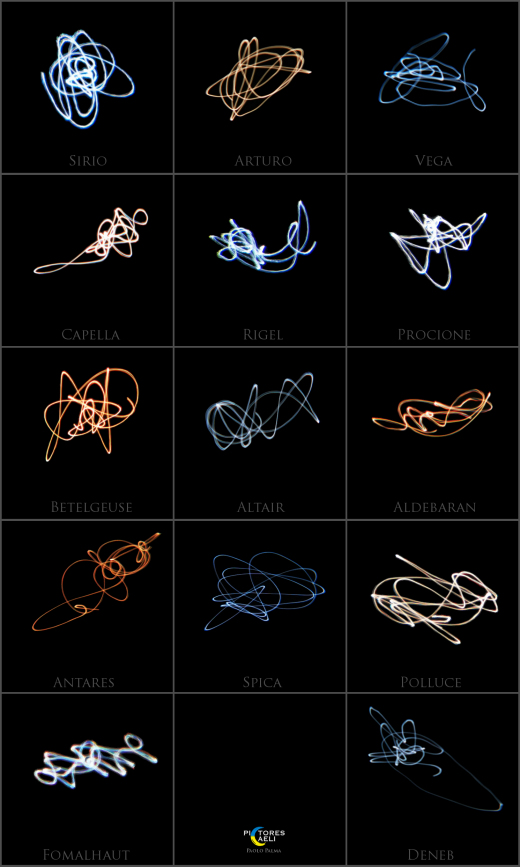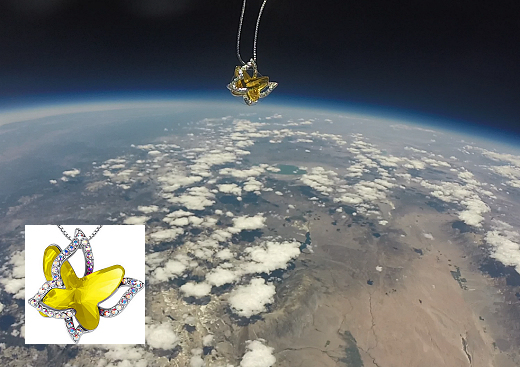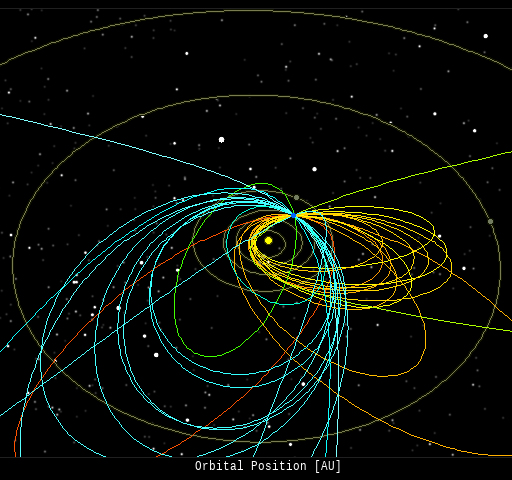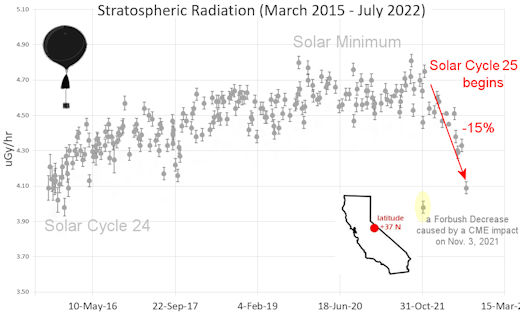 | | | Switch to: Europe, USA, New Zealand, Antarctica Credit: NOAA/Ovation  Planetary K-index Planetary K-index
Now: Kp= 3.00 quiet
24-hr max: Kp= 3.00 quiet
explanation | more data
Interplanetary Mag. Field
Btotal: 10.63 nT
Bz: 0.96 nT north
more data: ACE, DSCOVR
Updated: Today at 1146 UT  Coronal Holes: 18 Nov 22 Coronal Holes: 18 Nov 22 
Solar wind flowing from this southern coronal hole should reach Earth on Nov. 20th or 21st. Credit: SDO/AIA  Noctilucent Clouds Noctilucent Clouds
The summer season for northern noctilucent clouds has ended; the southern season will begin in November. Switch view: Europe, USA, Asia, Polar Updated Nov18  SPACE WEATHER
NOAA Forecasts | | Updated at: 2022 Nov 18 2200 UTC FLARE | 0-24 hr | 24-48 hr | CLASS M | 10 % | 10 % | CLASS X | 01 % | 01 % |  Geomagnetic Storms: Geomagnetic Storms:
Probabilities for significant disturbances in Earth's magnetic field are given for three activity levels: active, minor storm, severe storm Updated at: 2022 Nov 18 2200 UTC Mid-latitudes | 0-24 hr | 24-48 hr | ACTIVE | 40 % | 40 % | MINOR | 30 % | 35 % | SEVERE | 10 % | 15 % | High latitudes | 0-24 hr | 24-48 hr | ACTIVE | 10 % | 05 % | MINOR | 25 % | 20 % | SEVERE | 65 % | 75 % | | | |  | | | | | | | | | | | Never miss another geomagnetic storm. Sign up for Space Weather Alerts and you'll receive a text message when magnetic storms erupt. Aurora tour guides and professional astronomers use this service. You can, too! | | | GEOMAGNETIC STORM WATCH: NOAA forecasters say there is a chance of G1-class geomagnetic storms on Nov. 20th when a high-speed stream of solar wind is expected to hit Earth. The gaseous material is flowing from a large southern hole in the sun's atmosphere. Arctic sky watchers should be alert for auroras. Aurora alerts: SMS Text. SUNSPOT GENESIS: A new sunspot is emerging in the sun's northern hemisphere, sprouting more than a dozen moon-sized cores in less than 12 hours. NASA's Solar Dynamics Observatory captured its rapid growth: 
This sunspot is crackling with C-class solar flares, a result of opposing magnetic poles bumping together inside the active region's fast-changing boundaries. Stronger flares may be in the offing if the development proceeds apace. Solar flare alerts: SMS Text. WHAT HAPPENS WHEN YOU TAP YOUR TELESCOPE? It's an old astronomer's trick. If you want to make the color of a star really *pop*, tap your telescope. Amateur astronomer Paolo Palma of Naples, Italy, tried it and photographed the results: 
"Here is a mosaic of the colors of the brightest stars visible from Italy," says Palma. "I took them during this year by deliberately shocking the telescope. As the Italian poet Filippo Zamboni said, in this way the colors of the stars seem to come out of nowhere!" Turns out it's an old poet's trick, too. "The photographic parameters are the same for all shots and they have not undergone any extra processing to enhance their colors," he adds. Stars have different colors because they are different temperatures. The hottest stars are blue, with temperatures around 25,000 K. Red is the color of the coldest stars, which have surface temperatures of approximately 3,000 K. Palma captured almost the entire range. Realtime Space Weather Photo Gallery
Free: Spaceweather.com Newsletter THE EDGE OF SPACE BUTTTERFLY: Are you looking for a far-out gift? Consider the Edge of Space Butterfly. This crystal pendant just hitched a ride onboard an Earth to Sky Calculus cosmic ray research balloon:

You can have it for $162.95. The inner yellow citrine crystal is surrounded by a "spread your wings" lattice of sparkling zirconia. A rich layer of rhodium plating ensures the longevity of the pendant and its 18-inch chain. The Edge of Space Butterfly makes a great anniversary, Christmas, or birthday gift. It comes with a greeting card showing the pendant in flight and telling the story of its trip to the stratosphere and back again. Far Out Gifts: Earth to Sky Store
All sales support hands-on STEM education
Realtime Aurora Photo Gallery
Free: Spaceweather.com Newsletter Every night, a network of NASA all-sky cameras scans the skies above the United States for meteoritic fireballs. Automated software maintained by NASA's Meteoroid Environment Office calculates their orbits, velocity, penetration depth in Earth's atmosphere and many other characteristics. Daily results are presented here on Spaceweather.com. On Nov 18, 2022, the network reported 28 fireballs.
(13 sporadics, 8 Leonids, 5 northern Taurids, 2 omicron Eridanids)  In this diagram of the inner solar system, all of the fireball orbits intersect at a single point--Earth. The orbits are color-coded by velocity, from slow (red) to fast (blue). [Larger image] [movies] Potentially Hazardous Asteroids ( PHAs) are space rocks larger than approximately 100m that can come closer to Earth than 0.05 AU. None of the known PHAs is on a collision course with our planet, although astronomers are finding new ones all the time. On November 18, 2022 there were 2314 potentially hazardous asteroids.
 | Recent & Upcoming Earth-asteroid encounters: | Asteroid | Date(UT) | Miss Distance | Velocity (km/s) | Diameter (m) | | 2022 VG2 | 2022-Nov-13 | 3.8 LD | 12.3 | 20 | | 2022 VV2 | 2022-Nov-13 | 13.4 LD | 11 | 117 | | 2022 VE | 2022-Nov-13 | 11.3 LD | 9.6 | 31 | | 2022 VL1 | 2022-Nov-13 | 1.2 LD | 8.7 | 15 | | 2022 UH16 | 2022-Nov-14 | 14.8 LD | 9.8 | 22 | | 2022 UP2 | 2022-Nov-14 | 10.6 LD | 6 | 34 | | 2022 VP2 | 2022-Nov-14 | 6.2 LD | 12.9 | 18 | | 2022 WC | 2022-Nov-14 | 1.9 LD | 28.4 | 20 | | 2022 WN | 2022-Nov-15 | 10.5 LD | 13.6 | 20 | | 2022 VH2 | 2022-Nov-15 | 8 LD | 5.6 | 17 | | 2019 VL5 | 2022-Nov-15 | 8.5 LD | 8.1 | 24 | | 2022 UD28 | 2022-Nov-16 | 11 LD | 11.5 | 31 | | 2018 WH | 2022-Nov-16 | 2.5 LD | 7.7 | 4 | | 2022 WQ | 2022-Nov-16 | 7.8 LD | 11.9 | 14 | | 2022 WL | 2022-Nov-18 | 10.7 LD | 14.6 | 22 | | 2022 US14 | 2022-Nov-18 | 8.5 LD | 8.3 | 41 | | 2022 WA | 2022-Nov-18 | 1.3 LD | 16.2 | 16 | | 2022 VM2 | 2022-Nov-18 | 8.2 LD | 3.7 | 24 | | 2022 VO2 | 2022-Nov-19 | 8.9 LD | 14.6 | 23 | | 2022 WS | 2022-Nov-19 | 1.9 LD | 5.3 | 6 | | 2022 VU1 | 2022-Nov-20 | 7 LD | 7.1 | 17 | | 2022 VR1 | 2022-Nov-20 | 4.1 LD | 5.7 | 39 | | 2022 VX | 2022-Nov-20 | 11.2 LD | 5.9 | 14 | | 2019 OR1 | 2022-Nov-21 | 18.1 LD | 13.4 | 246 | | 2022 WD | 2022-Nov-21 | 11 LD | 6.6 | 10 | | 2022 VS1 | 2022-Nov-22 | 6.5 LD | 7.7 | 22 | | 2022 VT2 | 2022-Nov-22 | 3 LD | 6.8 | 23 | | 2005 LW3 | 2022-Nov-23 | 3 LD | 13.5 | 168 | | 2022 WO | 2022-Nov-24 | 10.2 LD | 8.4 | 21 | | 2022 UD72 | 2022-Nov-26 | 10.6 LD | 4.3 | 20 | | 2022 VQ | 2022-Nov-27 | 7.6 LD | 8.2 | 25 | | 2022 VB2 | 2022-Nov-29 | 9 LD | 8.4 | 33 | | 2010 VQ | 2022-Dec-02 | 11.9 LD | 3.9 | 10 | | 2009 HV58 | 2022-Dec-02 | 12.3 LD | 28.8 | 427 | | 2022 UT8 | 2022-Dec-02 | 11.1 LD | 4.2 | 70 | | 2017 QL33 | 2022-Dec-03 | 16 LD | 6.9 | 195 | | 2022 VP1 | 2022-Dec-05 | 17.3 LD | 7.1 | 56 | | 2019 XY | 2022-Dec-10 | 3.6 LD | 12.9 | 9 | | 2003 YS70 | 2022-Dec-13 | 10.4 LD | 4.1 | 5 | | 2019 XQ1 | 2022-Dec-13 | 14.5 LD | 9.8 | 30 | | 2018 XU3 | 2022-Dec-13 | 14.8 LD | 10.3 | 30 | | 2021 XS4 | 2022-Dec-14 | 14.5 LD | 9.7 | 23 | | 2015 RN35 | 2022-Dec-15 | 1.8 LD | 5.9 | 84 | | 2016 YE | 2022-Dec-18 | 18.6 LD | 4.8 | 23 | | 2014 HK129 | 2022-Dec-20 | 6.7 LD | 11.6 | 214 | | 2017 XQ60 | 2022-Dec-21 | 18.8 LD | 16 | 45 | | 2022 UD9 | 2022-Dec-22 | 4.6 LD | 10.3 | 154 | | 2022 RD2 | 2022-Dec-22 | 13.9 LD | 1.1 | 7 | | 2013 YA14 | 2022-Dec-25 | 2.7 LD | 10.5 | 68 | | 2022 TE14 | 2022-Dec-25 | 11.2 LD | 7 | 127 | | 2018 YK2 | 2022-Dec-26 | 15.8 LD | 15.1 | 98 | | 2010 XC15 | 2022-Dec-27 | 2 LD | 10.1 | 184 | | 2021 AE | 2022-Dec-28 | 16.5 LD | 15 | 23 | | 2021 NF | 2023-Jan-02 | 17.9 LD | 11.3 | 40 | | 2011 WR41 | 2023-Jan-03 | 15.8 LD | 8.9 | 34 | | 2019 AY3 | 2023-Jan-04 | 16.8 LD | 19.7 | 62 | | 2021 TL | 2023-Jan-09 | 14.2 LD | 8.5 | 75 | | 2014 LJ | 2023-Jan-14 | 4.8 LD | 3.5 | 7 | | 2012 BV13 | 2023-Jan-16 | 12.2 LD | 6.7 | 129 | Notes: LD means "Lunar Distance." 1 LD = 384,401 km, the distance between Earth and the Moon. 1 LD also equals 0.00256 AU. | | Cosmic Rays in the Atmosphere | SPACE WEATHER BALLOON DATA: Almost once a week, Spaceweather.com and the students of Earth to Sky Calculus fly space weather balloons to the stratosphere over California. These balloons are equipped with sensors that detect secondary cosmic rays, a form of radiation from space that can penetrate all the way down to Earth's surface. Our monitoring program has been underway without interruption for 7 years, resulting in a unique dataset of in situ atmospheric measurements. Latest results (July 2022): Atmospheric radiation is decreasing in 2022. Our latest measurements in July 2022 registered a 6-year low: 
What's going on? Ironically, the radiation drop is caused by increasing solar activity. Solar Cycle 25 has roared to life faster than forecasters expected. The sun's strengthening and increasingly tangled magnetic field repels cosmic rays from deep space. In addition, solar coronal mass ejections (CMEs) sweep aside cosmic rays, causing sharp reductions called "Forbush Decreases." The two effects blend together to bring daily radiation levels down. .Who cares? Cosmic rays are a surprisingly "down to Earth" form of space weather. They can alter the chemistry of the atmosphere, trigger lightning, and penetrate commercial airplanes. According to a study from the Harvard T.H. Chan school of public health, crews of aircraft have higher rates of cancer than the general population. The researchers listed cosmic rays, irregular sleep habits, and chemical contaminants as leading risk factors. A number of controversial studies (#1, #2, #3, #4) go even further, linking cosmic rays with cardiac arrhythmias and sudden cardiac death. Technical notes: The radiation sensors onboard our helium balloons detect X-rays and gamma-rays in the energy range 10 keV to 20 MeV. These energies span the range of medical X-ray machines and airport security scanners. Data points in the graph labeled "Stratospheric Radiation" correspond to the peak of the Regener-Pfotzer maximum, which lies about 67,000 feet above central California. When cosmic rays crash into Earth's atmosphere, they produce a spray of secondary particles that is most intense at the entrance to the stratosphere. Physicists Eric Regener and Georg Pfotzer discovered the maximum using balloons in the 1930s and it is what we are measuring today. | | The official U.S. government space weather bureau | | | The first place to look for information about sundogs, pillars, rainbows and related phenomena. | | | Researchers call it a "Hubble for the sun." SDO is the most advanced solar observatory ever. | | | 3D views of the sun from NASA's Solar and Terrestrial Relations Observatory | | | Realtime and archival images of the Sun from SOHO. | | | information about sunspots based on the latest NOAA/USAF Active Region Summary | | | current counts of failed and deployed Starlink satellites from Jonathan's Space Page | | | Authoritative predictions of space junk and satellite re-entries | | | from the NOAA Space Environment Center | | | fun to read, but should be taken with a grain of salt! Forecasts looking ahead more than a few days are often wrong. | | | from the NOAA Space Environment Center | | | the underlying science of space weather |  | BestCSGOGambling is the best site for everything related to CSGO gambling on the web |  | To find reviews of new online casino sites in the UK try The Casino DB where there are hundreds of online casino reviews complete with bonuses and ratings. Alternatively, Online-Casinos.xyz is another massive directory of online casinos listing sites for the UK and Worldwide. Casinos that offer Rupees for bonuses are very generous to Indian players. Find the best online casinos in India at AllCasinos.in Looking for a new online casino? Try Casimpo the new site dedicated to making online casino simple, or check out the new Avenger Slots Casino and Ace Online Casino with over 500 online slots and casino games. |  | One of the most popular casino games is the Book Of Dead Slot based on ancient Egyptian text, you can find all the casinos with spins at bookofdeadslotsites.com. |  | When looking for casinos to play online when the weather is bad, you can try casino online trucchi for Italian games. If you are not from Finland you can try the Swedish page Svenska casino online to find suitable games, check out svenskacasinoonline.net. Always check your local laws before playing with real money. |  | Looking for sports betting companies not registered on GamStop? CasinoGap has presented a list of sites not on GamStop available for UK players. Check and bet online! Would you like to bet at sites not using GamStop? Look at a list of NonStopCasino sites for online betting that aren't on GamStop. Top-rated bookmakers ever! | | | These links help Spaceweather.com stay online. Thank you to our supporters! | | | | | | | | |  | |  |   | ©2021 Spaceweather.com. All rights reserved. This site is penned daily by Dr. Tony Phillips. | |

